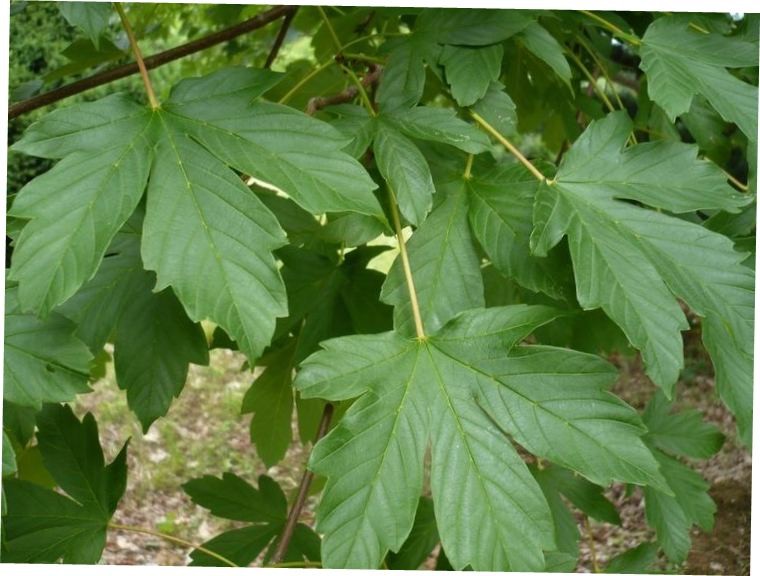Balkan maple
(Acer heldreichii trautvetteri)

Description
Acer heldreichii (Synonyms: Acer trautvetteri) is a species of maple in the flowering plant family Sapindaceae. Commonly called Balkan maple, Greek maple, Heldreich's maple, or mountain maple the species is native to the Balkan Peninsula east along the southern and eastern coasts of the Black Sea. Acer heldreichii is a tree up to 20 m (65.6 ft) tall with smooth bark. Leaves are 5–14 cm (2.0–5.5 in) long, deeply cut into three to five lobes which turn yellow to golden brown during the fall. Acer tataricum is related to Acer ginnala (Amur maple) from northeastern Asia; this is treated as a subspecies of Tatar maple (Acer tataricum subsp. ginnala) by some botanists but not by others. They differ conspicuously in the glossy, deeply lobed leaves of A. ginnala, compared to the matte, unlobed or only shallowly lobed leaves of A. tataricum. Acer is a genus of trees and shrubs commonly known as maples. The genus is placed in the family Sapindaceae. There are approximately 132 species, most of which are native to Asia, with a number also appearing in Europe, northern Africa, and North America. Only one species, Acer laurinum, extends to the Southern Hemisphere. The type species of the genus is the sycamore maple, Acer pseudoplatanus, the most common maple species in Europe. The maples usually have easily recognizable palmate leaves (Acer negundo is an exception) and distinctive winged fruits. The closest relatives of the maples are the horse chestnuts. Maple syrup is made from the sap of some maple species. Most maples are trees growing to a height of 10–45 m (33–148 ft). Others are shrubs less than 10 meters tall with a number of small trunks originating at ground level. Most species are deciduous, and many are renowned for their autumn leaf colour, but a few in southern Asia and the Mediterranean region are evergreen. Most are shade-tolerant when young and are often riparian, understory, or pioneer species rather than climax overstory trees. There are a few exceptions such as sugar maple. Many of the root systems are typically dense and fibrous, inhibiting the growth of other vegetation underneath them. A few species, notably Acer cappadocicum, frequently produce root sprouts, which can develop into clonal colonies.
Taxonomic tree:







